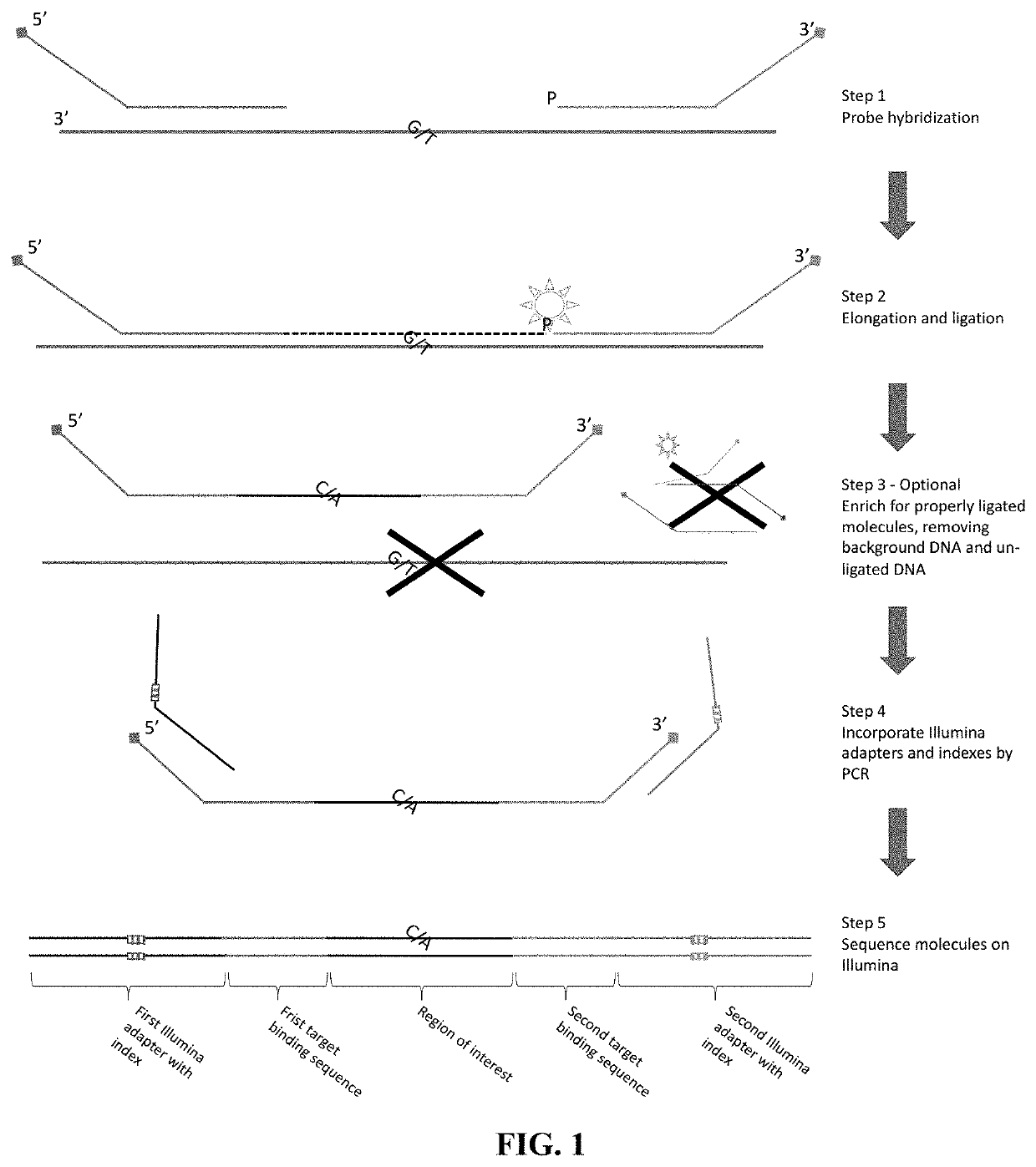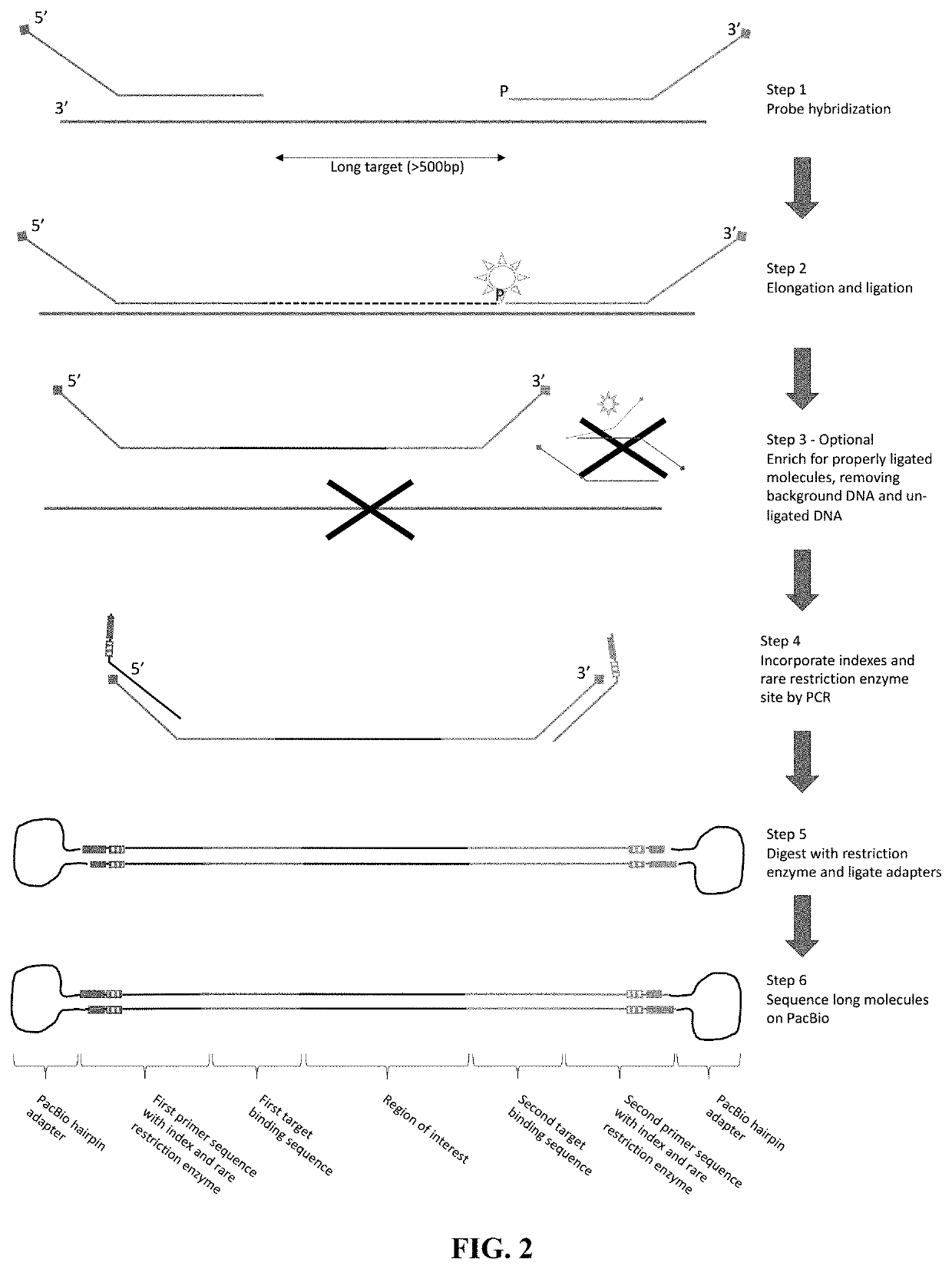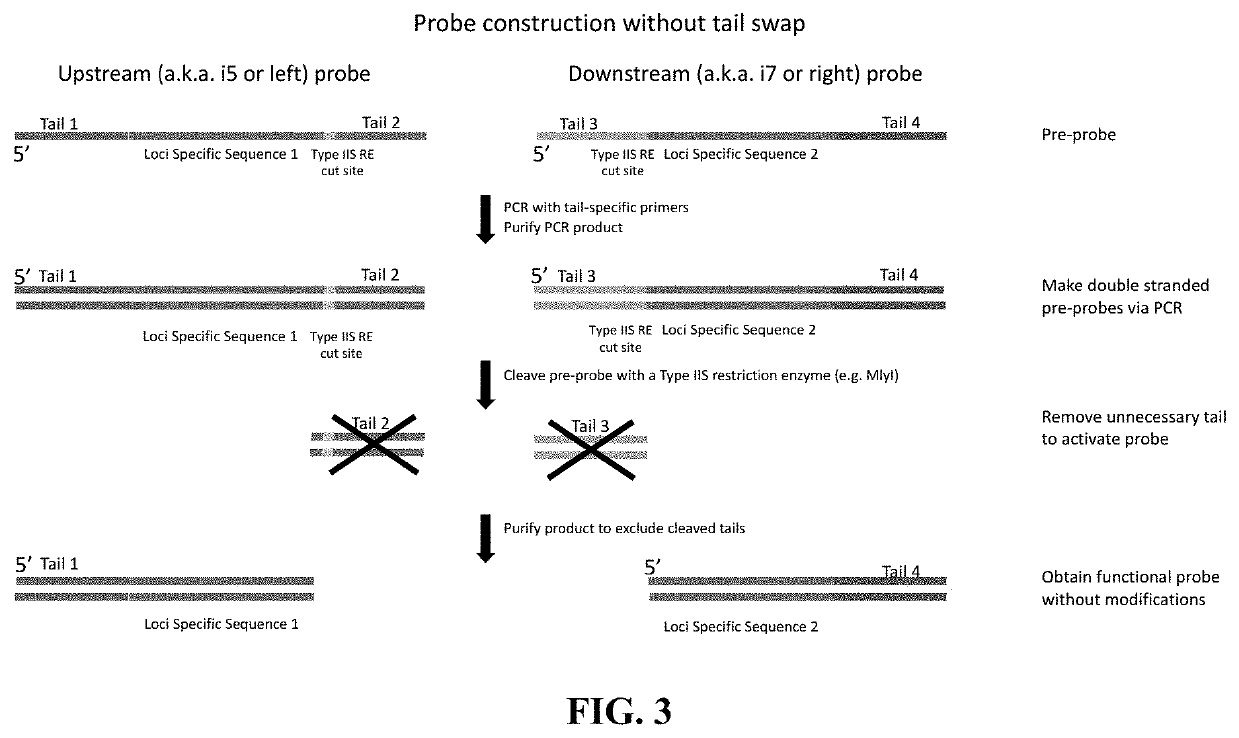Flexible and high-throughput sequencing of targeted genomic regions
a genomic region and high-throughput technology, applied in the field of flexible and high-throughput sequencing of targeted genomic regions, can solve the problems of high data variability, high cost, and inability to sequence targets of different lengths, and achieve the effect of reducing the number of sequencing steps, and improving the accuracy of sequencing results
- Summary
- Abstract
- Description
- Claims
- Application Information
AI Technical Summary
Benefits of technology
Problems solved by technology
Method used
Image
Examples
example 1
a Pair of Double Stranded Upstream and Downstream Probes
[0223]Two sets of double-stranded probes that will hybridize to both strands of the DNA around the target regions are produced. FIG. 6 illustrates the overview of the reaction utilizing double-stranded probes that hybridize to both strands of a target genomic region.
[0224]For a target genomic region, a pair of probes is designed so that it hybridizes downstream and upstream of the target region. The upstream probe is referenced herein as left probe or i5 probe, whereas the downstream probe is referenced herein as the right probe or i7 probe. The regions of probes that hybridize to the target are called Loci Specific Sequence (LSS) and can be designed based on the sequences that flank the target genomic region based on sequence complementarity. To form the single stranded pre-extension and pre-ligation probes, four universal tails are appended to the LSS to their respective 3′ and 5′ ends. The four tails are different from each ...
PUM
 Login to View More
Login to View More Abstract
Description
Claims
Application Information
 Login to View More
Login to View More - R&D
- Intellectual Property
- Life Sciences
- Materials
- Tech Scout
- Unparalleled Data Quality
- Higher Quality Content
- 60% Fewer Hallucinations
Browse by: Latest US Patents, China's latest patents, Technical Efficacy Thesaurus, Application Domain, Technology Topic, Popular Technical Reports.
© 2025 PatSnap. All rights reserved.Legal|Privacy policy|Modern Slavery Act Transparency Statement|Sitemap|About US| Contact US: help@patsnap.com



